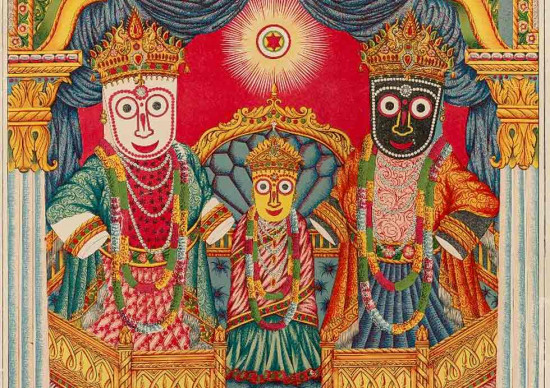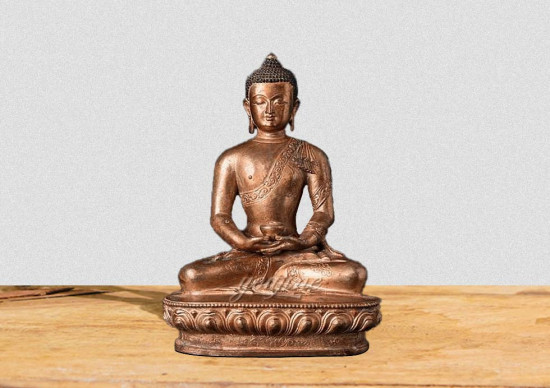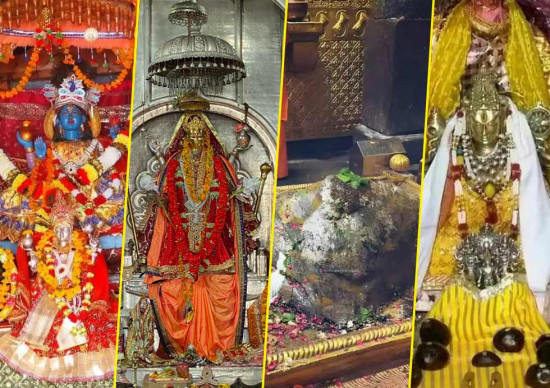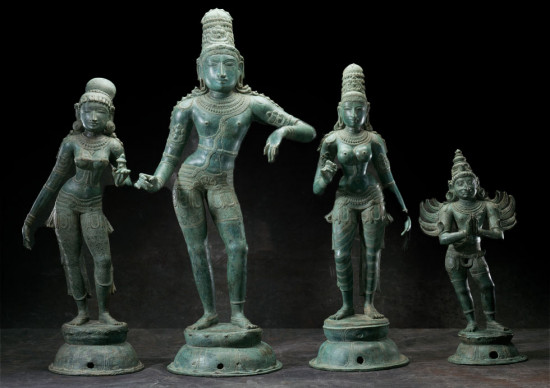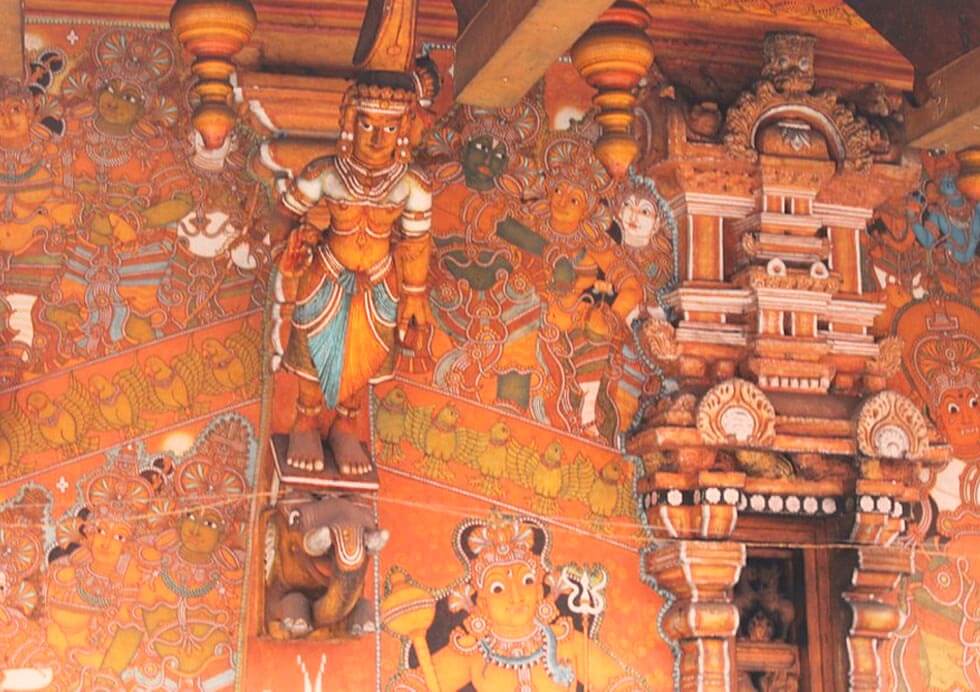
India, a land steeped in cultural diversity and artistic expression, boasts a magnificent array of painting styles that span centuries and regions. These art forms not only capture the imagination but also reflect the deep-rooted traditions, stories, and beliefs of the people. In this exploration, we delve into some of the most prominent traditional Indian painting styles, with a particular focus on the distinctive flavors of South Indian artistry.
Indian Painting Styles: A Tapestry of Tradition
Indian painting styles form a rich tapestry that reflects the country's vast cultural diversity and historical depth. These styles have evolved over millennia, shaped by religious beliefs, regional aesthetics, and historical influences. In this blog, we will explore traditional Indian painting styles categorized by their geographic origins: East, West, North, and South.
East Indian Painting Styles

Pattachitra (Odisha and West Bengal): Pattachitra is a traditional painting style from Odisha and West Bengal, characterized by intricate line work and vibrant natural colors. Artists use cloth or dried palm leaves as canvases to depict mythological narratives, local folklore, and religious themes. These paintings often serve as visual storytellers, blending artistic expression with cultural heritage.
Madhubani Painting (Bihar): Madhubani painting, also known as Mithila painting, originated in the Mithila region of Bihar. It is characterized by its intricate patterns, bold colors, and use of symbolic imagery. Madhubani paintings traditionally adorn the walls and floors of homes during festivals and special occasions. The themes range from mythological stories to nature, social rituals, and everyday life, reflecting the cultural identity and beliefs of the region's inhabitants.
Kalighat Painting (West Bengal): Kalighat painting originated in the vicinity of the Kalighat Temple in Kolkata, West Bengal. These paintings emerged as a popular urban folk art in the 19th century and were characterized by their bold strokes, vibrant colors, and depiction of everyday life and social themes. Kalighat paintings often featured satirical commentary on contemporary society, religious motifs, and scenes from Hindu mythology. They were typically created on paper with natural dyes and were sold as souvenirs to pilgrims visiting the Kalighat Temple.
Tantuja Painting (West Bengal): Tantuja painting is a traditional weaving and painting style practiced by the Tantubai weaver community in West Bengal. It involves painting intricate designs and motifs on handloom textiles using natural dyes and pigments. Tantuja paintings often feature geometric patterns, floral motifs, and abstract designs that adorn sarees and other textile products. This unique art form combines weaving and painting skills, highlighting the cultural heritage and craftsmanship of the Tantubai community.
These painting styles from Eastern India showcase the region's diverse artistic traditions, cultural expressions, and historical influences. Each style reflects unique local narratives, artistic techniques, and community practices that contribute to the vibrant tapestry of Indian art and heritage.
Madhubani Painting (Bihar): Madhubani painting, also known as Mithila painting, originated in the Mithila region of Bihar. It is characterized by its intricate patterns, bold colors, and use of symbolic imagery. Madhubani paintings traditionally adorn the walls and floors of homes during festivals and special occasions. The themes range from mythological stories to nature, social rituals, and everyday life, reflecting the cultural identity and beliefs of the region's inhabitants.
Kalighat Painting (West Bengal): Kalighat painting originated in the vicinity of the Kalighat Temple in Kolkata, West Bengal. These paintings emerged as a popular urban folk art in the 19th century and were characterized by their bold strokes, vibrant colors, and depiction of everyday life and social themes. Kalighat paintings often featured satirical commentary on contemporary society, religious motifs, and scenes from Hindu mythology. They were typically created on paper with natural dyes and were sold as souvenirs to pilgrims visiting the Kalighat Temple.
Tantuja Painting (West Bengal): Tantuja painting is a traditional weaving and painting style practiced by the Tantubai weaver community in West Bengal. It involves painting intricate designs and motifs on handloom textiles using natural dyes and pigments. Tantuja paintings often feature geometric patterns, floral motifs, and abstract designs that adorn sarees and other textile products. This unique art form combines weaving and painting skills, highlighting the cultural heritage and craftsmanship of the Tantubai community.
These painting styles from Eastern India showcase the region's diverse artistic traditions, cultural expressions, and historical influences. Each style reflects unique local narratives, artistic techniques, and community practices that contribute to the vibrant tapestry of Indian art and heritage.
West Indian Painting Styles

Warli Painting (Maharashtra): Warli painting is a form of tribal art from Maharashtra, known for its simplistic yet expressive style. Using white pigment on mud walls or paper, Warli artists create geometric patterns to depict scenes from rural life, such as harvests, weddings, and rituals. These paintings offer a glimpse into the everyday lives and spiritual beliefs of the Warli community, reflecting their close connection with nature and traditions.
Kerala Mural Painting: Kerala Mural Painting predominantly narrates tales from Hindu mythology, portraying gods, goddesses, and celestial beings in stylized forms against vibrant backgrounds. Natural pigments derived from minerals and vegetables are used, while pure gold is applied sparingly for highlights, adding a touch of luminosity and divine grace to the compositions. The artworks are characterized by detailed attention to gestures, attire, and symbolic elements that convey moral teachings, cultural values, and spiritual messages to viewers.
The composition of Kerala Mural Painting often includes intricate patterns of floral motifs, geometric designs, and architectural elements that enrich the narrative context and enhance the visual impact. Each painting serves not only as a visual spectacle but also as a medium for storytelling and spiritual contemplation, fostering a deep connection between art, mythology, and the cultural ethos of Kerala.
Pithora Painting (Gujarat and Rajasthan): Pithora painting is a traditional art form practiced by the Rathwa and Bhil tribes of Gujarat and Rajasthan. These paintings are ritualistic in nature and depict mythological narratives, folk tales, and daily life scenes. Pithora paintings are characterized by their vibrant colors, geometric patterns, and symbolic representations of animals, humans, and deities. They are often created on mud walls or cloth and serve as visual expressions of cultural identity and spiritual beliefs.
Gond Art (Madhya Pradesh): Gond art originates from the Gond tribal community in Madhya Pradesh. It is characterized by intricate patterns and vibrant colors used to depict flora, fauna, and mythological stories. Gond artists employ fine lines and dots to create visually striking compositions that often convey a deep connection with nature and tribal folklore. Traditionally created on walls, these artworks have transitioned to paper and canvas, gaining recognition in the contemporary art world for their unique style and storytelling elements.
Phad Painting (Rajasthan): Phad painting is a traditional style from Rajasthan, particularly practiced by the Joshi families of Bhilwara and Shahpura. These large scroll paintings depict the life and heroic deeds of the folk deity Pabuji or Devnarayan. Phad paintings are created on cloth using natural pigments and are characterized by bold outlines, bright colors, and narrative storytelling. They are often used as portable temples during performances of the Phad narrative, where the scroll is gradually unfurled to reveal the story to the audience.
Saura Painting (Odisha): Saura painting, also known as "Ikons" or "Chitra," is practiced by the Saura tribe of Odisha. These paintings are geometric in nature, featuring stylized human and animal figures in vibrant colors. Saura artists use natural pigments and materials such as brushes made from animal hair to create intricate designs on walls and cloth. The paintings often depict themes related to nature, daily life, and rituals, reflecting the Saura tribe's cultural traditions and spiritual beliefs.
These West Indian painting styles highlight the region's cultural diversity, artistic ingenuity, and deep-rooted connections with tribal heritage and folklore. Each style reflects unique local influences, storytelling traditions, and artistic techniques that contribute to the rich tapestry of Indian art.
Kerala Mural Painting: Kerala Mural Painting predominantly narrates tales from Hindu mythology, portraying gods, goddesses, and celestial beings in stylized forms against vibrant backgrounds. Natural pigments derived from minerals and vegetables are used, while pure gold is applied sparingly for highlights, adding a touch of luminosity and divine grace to the compositions. The artworks are characterized by detailed attention to gestures, attire, and symbolic elements that convey moral teachings, cultural values, and spiritual messages to viewers.
The composition of Kerala Mural Painting often includes intricate patterns of floral motifs, geometric designs, and architectural elements that enrich the narrative context and enhance the visual impact. Each painting serves not only as a visual spectacle but also as a medium for storytelling and spiritual contemplation, fostering a deep connection between art, mythology, and the cultural ethos of Kerala.
Pithora Painting (Gujarat and Rajasthan): Pithora painting is a traditional art form practiced by the Rathwa and Bhil tribes of Gujarat and Rajasthan. These paintings are ritualistic in nature and depict mythological narratives, folk tales, and daily life scenes. Pithora paintings are characterized by their vibrant colors, geometric patterns, and symbolic representations of animals, humans, and deities. They are often created on mud walls or cloth and serve as visual expressions of cultural identity and spiritual beliefs.
Gond Art (Madhya Pradesh): Gond art originates from the Gond tribal community in Madhya Pradesh. It is characterized by intricate patterns and vibrant colors used to depict flora, fauna, and mythological stories. Gond artists employ fine lines and dots to create visually striking compositions that often convey a deep connection with nature and tribal folklore. Traditionally created on walls, these artworks have transitioned to paper and canvas, gaining recognition in the contemporary art world for their unique style and storytelling elements.
Phad Painting (Rajasthan): Phad painting is a traditional style from Rajasthan, particularly practiced by the Joshi families of Bhilwara and Shahpura. These large scroll paintings depict the life and heroic deeds of the folk deity Pabuji or Devnarayan. Phad paintings are created on cloth using natural pigments and are characterized by bold outlines, bright colors, and narrative storytelling. They are often used as portable temples during performances of the Phad narrative, where the scroll is gradually unfurled to reveal the story to the audience.
Saura Painting (Odisha): Saura painting, also known as "Ikons" or "Chitra," is practiced by the Saura tribe of Odisha. These paintings are geometric in nature, featuring stylized human and animal figures in vibrant colors. Saura artists use natural pigments and materials such as brushes made from animal hair to create intricate designs on walls and cloth. The paintings often depict themes related to nature, daily life, and rituals, reflecting the Saura tribe's cultural traditions and spiritual beliefs.
These West Indian painting styles highlight the region's cultural diversity, artistic ingenuity, and deep-rooted connections with tribal heritage and folklore. Each style reflects unique local influences, storytelling traditions, and artistic techniques that contribute to the rich tapestry of Indian art.
North Indian Painting Styles
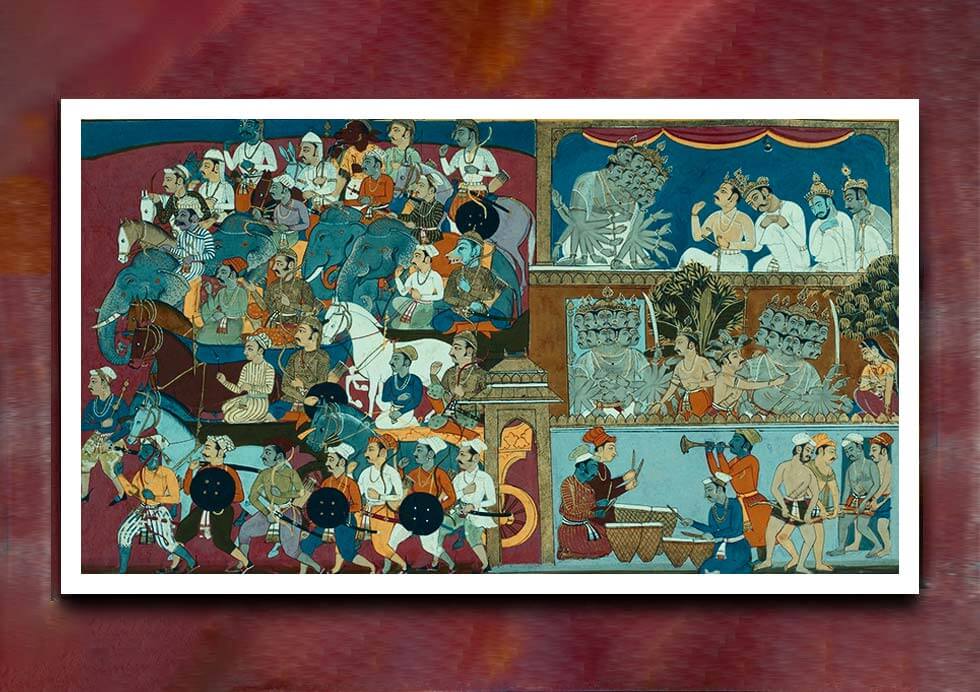
Mughal Miniature Painting: Emerging during the Mughal Empire in the 16th century, Mughal miniature painting is renowned for its detailed craftsmanship and vibrant colors. Artists used fine brushes and natural pigments to depict scenes from court life, epic tales, and portraits of emperors. These miniatures not only served as visual records of historical events but also showcased the empire's cultural sophistication and artistic prowess.
Rajput Painting (Rajasthan and Central India): Rajput painting flourished in the royal courts of Rajasthan and Central India, blending Hindu, Mughal, and Persian influences. Known for its bold colors, poetic themes, and portrayal of mythological legends, Rajput paintings adorned palace walls and manuscripts. They often depicted heroic tales and romantic narratives, celebrating Rajput chivalry and the splendor of courtly life.
Pahari Painting (Himachal Pradesh, Jammu & Kashmir, Uttarakhand): Pahari painting emerged in the foothills of the Himalayas, patronized by the Rajput and later by the Sikh rulers. It encompasses several sub-styles such as Basohli, Kangra, Guler, and Chamba schools. Pahari paintings are known for their delicacy, lyrical portrayal of nature, and depiction of Hindu religious themes, especially the love legends of Radha and Krishna. These paintings often feature fine line work, vivid colors derived from natural pigments, and a focus on depicting emotions and poetic themes.
Kangra Painting (Himachal Pradesh): Kangra painting flourished under the patronage of the Kangra rulers in Himachal Pradesh. It is renowned for its lyrical and poetic portrayal of Krishna and Radha, depicted amidst lush landscapes and delicate detailing. Kangra paintings are characterized by their use of soft colors, intricate brushwork, and the depiction of love in its various stages through the seasons.
Bundi Painting (Rajasthan): Bundi painting originated in the princely state of Bundi in Rajasthan, known for its vibrant and bold style. These paintings often depict royal court scenes, hunting expeditions, festivals, and mythological tales. Bundi paintings are distinguished by their use of deep hues, particularly blues and greens, and the depiction of miniature figures with expressive eyes and detailed facial features.
Pichwai Painting (Rajasthan): Pichwai painting is a traditional art form originating from Nathdwara, Rajasthan, primarily depicting Lord Krishna. These large-scale paintings are created on cloth and often depict Krishna in various poses, particularly in his childhood antics (Bal Krishna). Pichwai paintings are characterized by their intricate detailing, use of natural dyes, and embellishments such as gold and silver foil, which add a sense of richness and devotion to the artworks.
Bikaner Miniature Painting (Rajasthan): Bikaner miniature painting flourished under the patronage of the Bikaner royal court in Rajasthan. Known for its meticulous craftsmanship and bold colors, these miniatures often depict historical events, court scenes, and portraits of royalty. Bikaner miniatures are notable for their detailed portrayal of textiles, jewelry, and architectural elements, showcasing the opulence and cultural refinement of the Bikaner court.
These North Indian painting styles highlight the region's rich artistic traditions, royal patronage, and cultural narratives, each contributing uniquely to India's diverse and vibrant heritage of painting.
Rajput Painting (Rajasthan and Central India): Rajput painting flourished in the royal courts of Rajasthan and Central India, blending Hindu, Mughal, and Persian influences. Known for its bold colors, poetic themes, and portrayal of mythological legends, Rajput paintings adorned palace walls and manuscripts. They often depicted heroic tales and romantic narratives, celebrating Rajput chivalry and the splendor of courtly life.
Pahari Painting (Himachal Pradesh, Jammu & Kashmir, Uttarakhand): Pahari painting emerged in the foothills of the Himalayas, patronized by the Rajput and later by the Sikh rulers. It encompasses several sub-styles such as Basohli, Kangra, Guler, and Chamba schools. Pahari paintings are known for their delicacy, lyrical portrayal of nature, and depiction of Hindu religious themes, especially the love legends of Radha and Krishna. These paintings often feature fine line work, vivid colors derived from natural pigments, and a focus on depicting emotions and poetic themes.
Kangra Painting (Himachal Pradesh): Kangra painting flourished under the patronage of the Kangra rulers in Himachal Pradesh. It is renowned for its lyrical and poetic portrayal of Krishna and Radha, depicted amidst lush landscapes and delicate detailing. Kangra paintings are characterized by their use of soft colors, intricate brushwork, and the depiction of love in its various stages through the seasons.
Bundi Painting (Rajasthan): Bundi painting originated in the princely state of Bundi in Rajasthan, known for its vibrant and bold style. These paintings often depict royal court scenes, hunting expeditions, festivals, and mythological tales. Bundi paintings are distinguished by their use of deep hues, particularly blues and greens, and the depiction of miniature figures with expressive eyes and detailed facial features.
Pichwai Painting (Rajasthan): Pichwai painting is a traditional art form originating from Nathdwara, Rajasthan, primarily depicting Lord Krishna. These large-scale paintings are created on cloth and often depict Krishna in various poses, particularly in his childhood antics (Bal Krishna). Pichwai paintings are characterized by their intricate detailing, use of natural dyes, and embellishments such as gold and silver foil, which add a sense of richness and devotion to the artworks.
Bikaner Miniature Painting (Rajasthan): Bikaner miniature painting flourished under the patronage of the Bikaner royal court in Rajasthan. Known for its meticulous craftsmanship and bold colors, these miniatures often depict historical events, court scenes, and portraits of royalty. Bikaner miniatures are notable for their detailed portrayal of textiles, jewelry, and architectural elements, showcasing the opulence and cultural refinement of the Bikaner court.
These North Indian painting styles highlight the region's rich artistic traditions, royal patronage, and cultural narratives, each contributing uniquely to India's diverse and vibrant heritage of painting.
South Indian Painting Styles
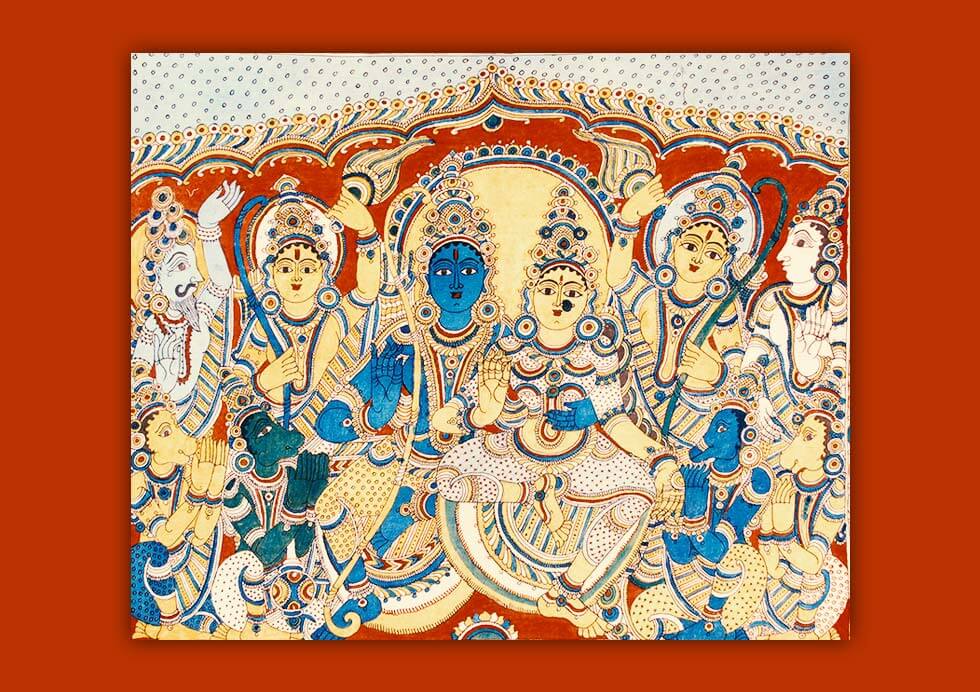
Tanjore Painting (Tamil Nadu): Tanjore painting originated in Tamil Nadu and is distinguished by its rich colors, surface richness, and the use of gold foil and precious stones. These paintings typically feature Hindu gods and goddesses in a divine and opulent portrayal, reflecting the region's cultural devotion and artistic grandeur. Tanjore paintings continue to be revered for their religious significance and ornate beauty.
Artisans, often from hereditary lineages of painters, undergo rigorous training to master the meticulous techniques of Tanjore painting. Themes predominantly feature Hindu gods and goddesses, including Krishna, Vishnu, Lakshmi, and others from mythological epics like the Ramayana and Mahabharata. Each painting is meticulously structured with the central deity typically surrounded by ornate arches, curtains, and decorative elements, creating a visually striking and spiritually uplifting composition.
Beyond their aesthetic appeal, Tanjore paintings serve as objects of devotion and cultural reverence, adorning the walls of temples, palaces, and homes. They symbolize continuity and preservation of cultural heritage, passed down through generations as treasured heirlooms that embody spiritual connection and artistic legacy.
Mysore Painting (Karnataka): Mysore painting is a classical South Indian painting style that originated in the city of Mysore, Karnataka. Known for its intricate details, vibrant colors, and graceful compositions, Mysore paintings often depict Hindu gods and goddesses, mythological scenes, and royal portraits. The use of mineral and vegetable dyes enhances the paintings' longevity, making them exquisite examples of South Indian artistic heritage.
Kalamkari (Andhra Pradesh and Telangana): Kalamkari is a traditional South Indian art form that involves hand-painting or block-printing on fabric using natural dyes. Originating from Andhra Pradesh and Telangana, Kalamkari art is renowned for its intricate motifs, often depicting mythological tales, epic narratives, and flora and fauna. There are two distinct styles: Srikalahasti Kalamkari, known for its freehand drawing and vibrant colors, and Machilipatnam Kalamkari, characterized by block-printed motifs and intricate detailing.
Cheriyal Scroll Painting (Telangana): Cheriyal scroll painting is a stylized form of narrative art from Telangana. Artists use cloth scrolls as canvases to depict stories from Indian mythology, folklore, and social narratives. These paintings are characterized by bold outlines, vibrant colors, and sequential storytelling techniques. Cheriyal scroll paintings were traditionally used by storytellers (Gadimathas) to narrate tales to rural audiences, making them a significant cultural medium in Telangana's artistic heritage.
Madhubani Painting (Bihar): While Madhubani painting originates from Bihar, its influence and popularity have spread to South India as well. This traditional art form involves intricate patterns and vibrant colors, typically depicting scenes from Hindu mythology, nature, and daily life. Madhubani paintings are known for their distinctive style, where artists use twigs, brushes, and natural dyes to create intricate designs filled with symbolism and cultural significance.
These South Indian painting styles, including Tanjore painting mentioned earlier, collectively showcase the region's artistic diversity, cultural vibrancy, and deep-rooted traditions. Each style reflects unique local influences, storytelling traditions, and craftsmanship, contributing to the rich tapestry of Indian artistry.
Artisans, often from hereditary lineages of painters, undergo rigorous training to master the meticulous techniques of Tanjore painting. Themes predominantly feature Hindu gods and goddesses, including Krishna, Vishnu, Lakshmi, and others from mythological epics like the Ramayana and Mahabharata. Each painting is meticulously structured with the central deity typically surrounded by ornate arches, curtains, and decorative elements, creating a visually striking and spiritually uplifting composition.
Beyond their aesthetic appeal, Tanjore paintings serve as objects of devotion and cultural reverence, adorning the walls of temples, palaces, and homes. They symbolize continuity and preservation of cultural heritage, passed down through generations as treasured heirlooms that embody spiritual connection and artistic legacy.
Mysore Painting (Karnataka): Mysore painting is a classical South Indian painting style that originated in the city of Mysore, Karnataka. Known for its intricate details, vibrant colors, and graceful compositions, Mysore paintings often depict Hindu gods and goddesses, mythological scenes, and royal portraits. The use of mineral and vegetable dyes enhances the paintings' longevity, making them exquisite examples of South Indian artistic heritage.
Kalamkari (Andhra Pradesh and Telangana): Kalamkari is a traditional South Indian art form that involves hand-painting or block-printing on fabric using natural dyes. Originating from Andhra Pradesh and Telangana, Kalamkari art is renowned for its intricate motifs, often depicting mythological tales, epic narratives, and flora and fauna. There are two distinct styles: Srikalahasti Kalamkari, known for its freehand drawing and vibrant colors, and Machilipatnam Kalamkari, characterized by block-printed motifs and intricate detailing.
Cheriyal Scroll Painting (Telangana): Cheriyal scroll painting is a stylized form of narrative art from Telangana. Artists use cloth scrolls as canvases to depict stories from Indian mythology, folklore, and social narratives. These paintings are characterized by bold outlines, vibrant colors, and sequential storytelling techniques. Cheriyal scroll paintings were traditionally used by storytellers (Gadimathas) to narrate tales to rural audiences, making them a significant cultural medium in Telangana's artistic heritage.
Madhubani Painting (Bihar): While Madhubani painting originates from Bihar, its influence and popularity have spread to South India as well. This traditional art form involves intricate patterns and vibrant colors, typically depicting scenes from Hindu mythology, nature, and daily life. Madhubani paintings are known for their distinctive style, where artists use twigs, brushes, and natural dyes to create intricate designs filled with symbolism and cultural significance.
These South Indian painting styles, including Tanjore painting mentioned earlier, collectively showcase the region's artistic diversity, cultural vibrancy, and deep-rooted traditions. Each style reflects unique local influences, storytelling traditions, and craftsmanship, contributing to the rich tapestry of Indian artistry.
Common Threads Across Indian Painting Styles
Across these diverse painting styles, several common threads emerge. Each style reflects a deep reverence for tradition and spirituality, often depicting religious themes and mythological narratives. Artisans across India demonstrate a commitment to meticulous craftsmanship, using traditional techniques and natural materials to create visually striking artworks that transcend generations.
Traditional Indian Painting Styles: Bridging Past and Present
Beyond the South, traditional Indian painting styles encompass a kaleidoscope of techniques and themes. Rajput painting captures medieval India's romance with vibrant colors and poetic compositions, often depicting scenes from epics like the Ramayana and Mahabharata. Mughal miniature painting, blending Persian and Indian traditions, flourished under Mughal emperors with intricate detailing and delicate brushwork depicting court scenes and historical events.
Folk and Tribal Art
Folk and Tribal Art
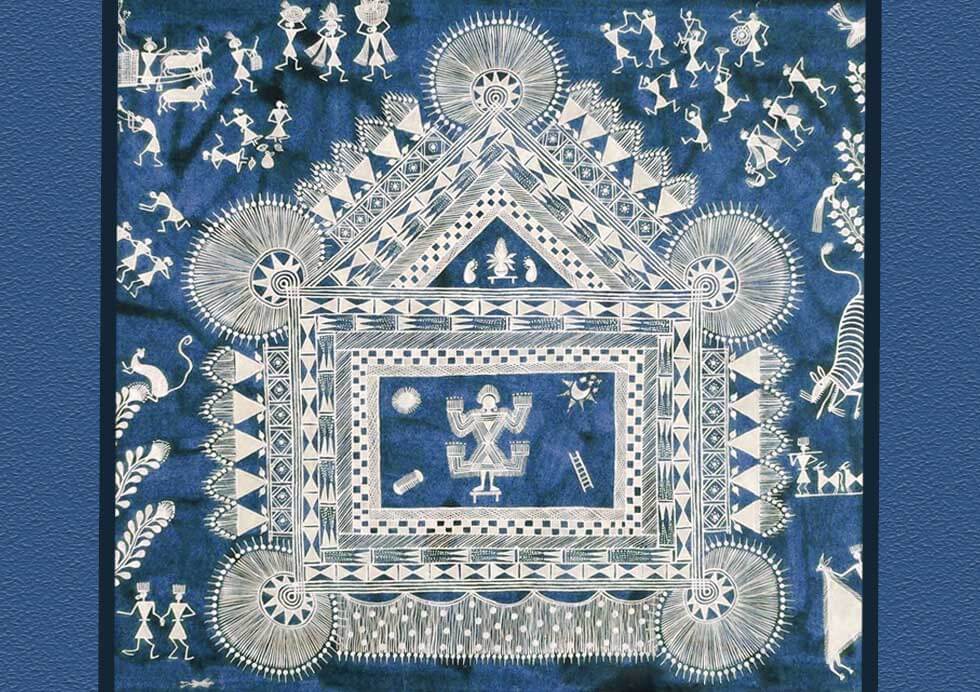
India's cultural tapestry includes vibrant folk and tribal art forms that complement classical styles. Warli painting from Maharashtra, Madhubani art from Bihar, and Pattachitra from Odisha preserve rural traditions through geometric patterns, lively narratives, and ritual depictions. Each stroke and motif in these artworks carries tales of folklore and everyday life, bridging ancient traditions with contemporary contexts.
Celebrating Diversity and Legacy
As we explore these diverse painting styles, we not only admire their aesthetic beauty but also appreciate their role in preserving India's cultural heritage. These artworks serve as windows into the past, offering insights into beliefs, customs, and artistic sensibilities. Moreover, they inspire contemporary artists and audiences, affirming the timeless appeal and relevance of Indian painting styles in today's globalized world.
Celebrating Diversity and Legacy
As we explore these diverse painting styles, we not only admire their aesthetic beauty but also appreciate their role in preserving India's cultural heritage. These artworks serve as windows into the past, offering insights into beliefs, customs, and artistic sensibilities. Moreover, they inspire contemporary artists and audiences, affirming the timeless appeal and relevance of Indian painting styles in today's globalized world.
Conclusion
The rich heritage of Indian painting styles transcends boundaries of time and geography, uniting diverse traditions under a common artistic umbrella. Whether exploring the intricacies of South Indian masterpieces or the grandeur of Mughal miniatures, each brushstroke tells a story, each color evokes an emotion, and each artwork beckons us to appreciate the cultural mosaic that is India's artistic legacy.


